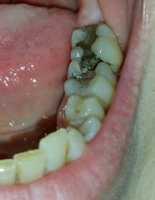Author Interviews, JAMA, OBGYNE, Pediatrics / 01.06.2020
Risks & Benefits to Children of Maternal Antenatal Corticosteroids
MedicalResearch.com Interview with:
 Katri Räikkönen
Professor, Department of Psychology and Logopedics
University of Helsinski
MedicalResearch.com: What is the background for this study?
Response: Maternal antenatal corticosteroid treatment is standard care when there is a risk for preterm delivery. The treatment improves the prognosis of babies born preterm.
In high-income countries, antenatal corticosteroid treatment has been in routine use for over 30 years. Recommendations and clinical care guidelines for maternal antenatal corticosteroid treatment differ between continents and countries. In Finland the treatment is currently recommended when the risk for preterm delivery is at 34 gestational weeks or less. In select cases, the treatment is recommended even later in gestation. Corticosteroids accelerate fetal maturation, especially in the lungs, and increase the child’s resilience to the stress that results from being born preterm.
However, antenatal corticosteroids not only cross the placenta, but also cross the the blood-brain barrier and may harm fetal brain development. We are not aware of previous population-based studies that would have tested if maternal antenatal corticosteroid treatment would be associated with mental and behavioral disorders in children and we are not either aware of studies that would have tested if any associations would be explained by shared genetic or familial factors.
(more…)
Katri Räikkönen
Professor, Department of Psychology and Logopedics
University of Helsinski
MedicalResearch.com: What is the background for this study?
Response: Maternal antenatal corticosteroid treatment is standard care when there is a risk for preterm delivery. The treatment improves the prognosis of babies born preterm.
In high-income countries, antenatal corticosteroid treatment has been in routine use for over 30 years. Recommendations and clinical care guidelines for maternal antenatal corticosteroid treatment differ between continents and countries. In Finland the treatment is currently recommended when the risk for preterm delivery is at 34 gestational weeks or less. In select cases, the treatment is recommended even later in gestation. Corticosteroids accelerate fetal maturation, especially in the lungs, and increase the child’s resilience to the stress that results from being born preterm.
However, antenatal corticosteroids not only cross the placenta, but also cross the the blood-brain barrier and may harm fetal brain development. We are not aware of previous population-based studies that would have tested if maternal antenatal corticosteroid treatment would be associated with mental and behavioral disorders in children and we are not either aware of studies that would have tested if any associations would be explained by shared genetic or familial factors.
(more…)
 Katri Räikkönen
Professor, Department of Psychology and Logopedics
University of Helsinski
MedicalResearch.com: What is the background for this study?
Response: Maternal antenatal corticosteroid treatment is standard care when there is a risk for preterm delivery. The treatment improves the prognosis of babies born preterm.
In high-income countries, antenatal corticosteroid treatment has been in routine use for over 30 years. Recommendations and clinical care guidelines for maternal antenatal corticosteroid treatment differ between continents and countries. In Finland the treatment is currently recommended when the risk for preterm delivery is at 34 gestational weeks or less. In select cases, the treatment is recommended even later in gestation. Corticosteroids accelerate fetal maturation, especially in the lungs, and increase the child’s resilience to the stress that results from being born preterm.
However, antenatal corticosteroids not only cross the placenta, but also cross the the blood-brain barrier and may harm fetal brain development. We are not aware of previous population-based studies that would have tested if maternal antenatal corticosteroid treatment would be associated with mental and behavioral disorders in children and we are not either aware of studies that would have tested if any associations would be explained by shared genetic or familial factors.
(more…)
Katri Räikkönen
Professor, Department of Psychology and Logopedics
University of Helsinski
MedicalResearch.com: What is the background for this study?
Response: Maternal antenatal corticosteroid treatment is standard care when there is a risk for preterm delivery. The treatment improves the prognosis of babies born preterm.
In high-income countries, antenatal corticosteroid treatment has been in routine use for over 30 years. Recommendations and clinical care guidelines for maternal antenatal corticosteroid treatment differ between continents and countries. In Finland the treatment is currently recommended when the risk for preterm delivery is at 34 gestational weeks or less. In select cases, the treatment is recommended even later in gestation. Corticosteroids accelerate fetal maturation, especially in the lungs, and increase the child’s resilience to the stress that results from being born preterm.
However, antenatal corticosteroids not only cross the placenta, but also cross the the blood-brain barrier and may harm fetal brain development. We are not aware of previous population-based studies that would have tested if maternal antenatal corticosteroid treatment would be associated with mental and behavioral disorders in children and we are not either aware of studies that would have tested if any associations would be explained by shared genetic or familial factors.
(more…)


























